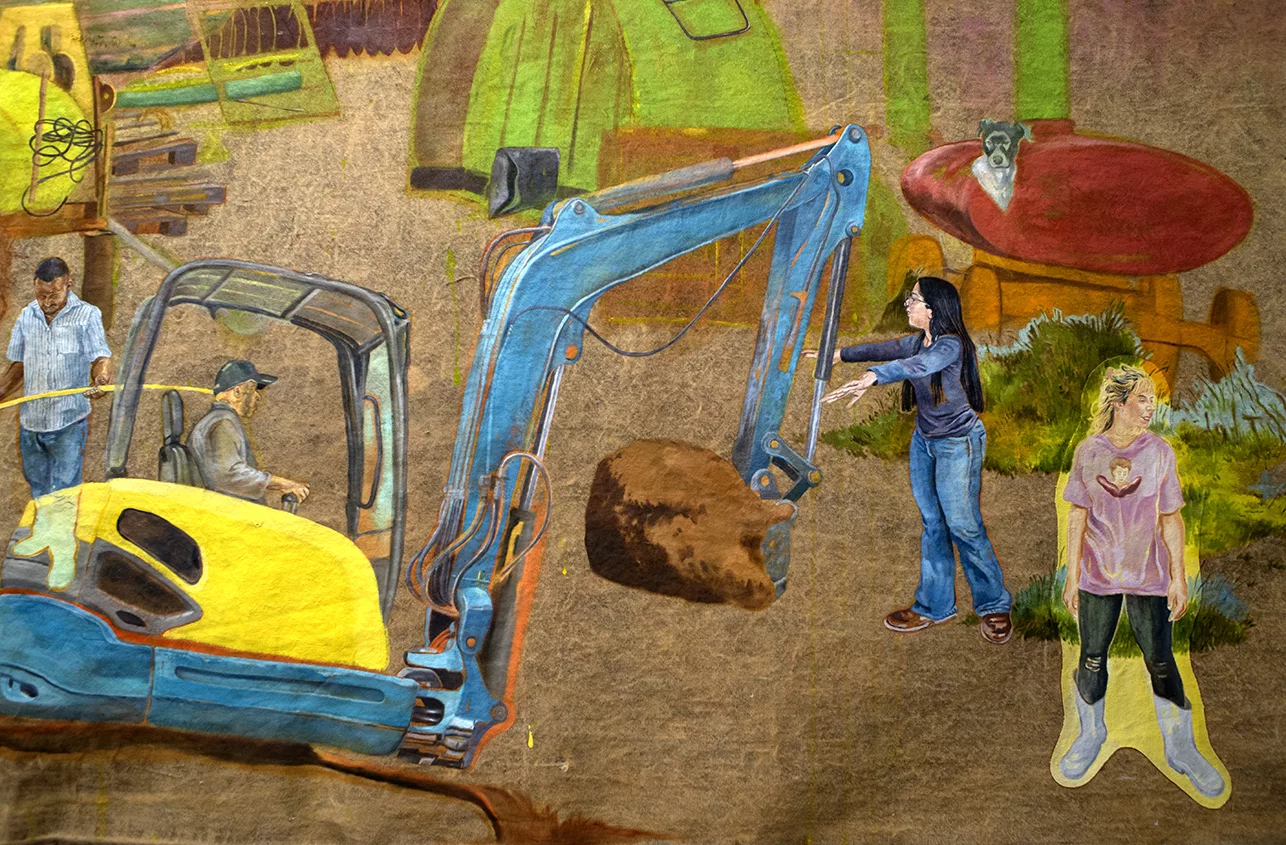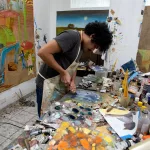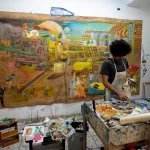Arena, Felipe Rezende’s Second Solo Exhibition at Galeria Leme
For his second solo exhibition at Galeria Leme, Felipe Rezende presents a predominantly new body of paintings and installations. With a critical text by Amanda Tavares, the show expands the artist’s investigation into geographical, social, and symbolic displacements and their ensuing tensions.
In his works, Rezende builds an imagetic vocabulary to construct dense landscapes inhabited by human, semi-human, and non-human figures, where the real and the imaginary overlap. By combining data, internet images, augmented reality devices, and industrial materials, his compositions are traversed by forces of social order, class, labor, and the environment.
The exhibition is rooted in a recent trip the artist took to western Bahia, where he visited a soybean and corn farm. There, he was confronted with the friction of coexistence between cutting-edge technology and the marked obsolescence so evident in the area. As curator Amanda Tavares writes, the artist encountered “human and non-human ruins scattered across the land like remnants of exhausted life cycles, pointing to what persists on the margins of technological efficiency.”
The work that gives the exhibition its title, Arena, features a tarp suspended by a circular structure within the exhibition space—an external shelter of sorts, but internally marked by overlays of time, materials, and narratives. More than a pictorial support, the tarp functions for the artist as both body and territory, bearing the marks and memories of these displacements.
Rezende also presents in São Paulo for the first time the work A Prodigious Solution to a Noisy Problem (2025), previously exhibited at the Vera Chaves Barcellos Foundation during the 14th Mercosur Biennial. Nearly four meters long, the painting stems from the saturation of images and data that bombard us daily to parody the discourses of innovation and efficiency in the agricultural industry. By suspending images of wrecked and burned vehicles alongside inspired human figures, the work suggests a dissonance between collapse and apathy.
Five new paintings on truck tarps occupy the exhibition space, unfolding ideas and dialogues the artist weaves into his installations, while also exploring the more intimate universe of his figures.
Arena articulates the clash between spaces and times experienced by the artist, composing a socially realistic portrait. By gathering fragments, apparitions, and residues, Felipe Rezende transforms the landscape into a field of forces where, as the curator concludes, “reality guides invention just as much as invention guides reality.”


